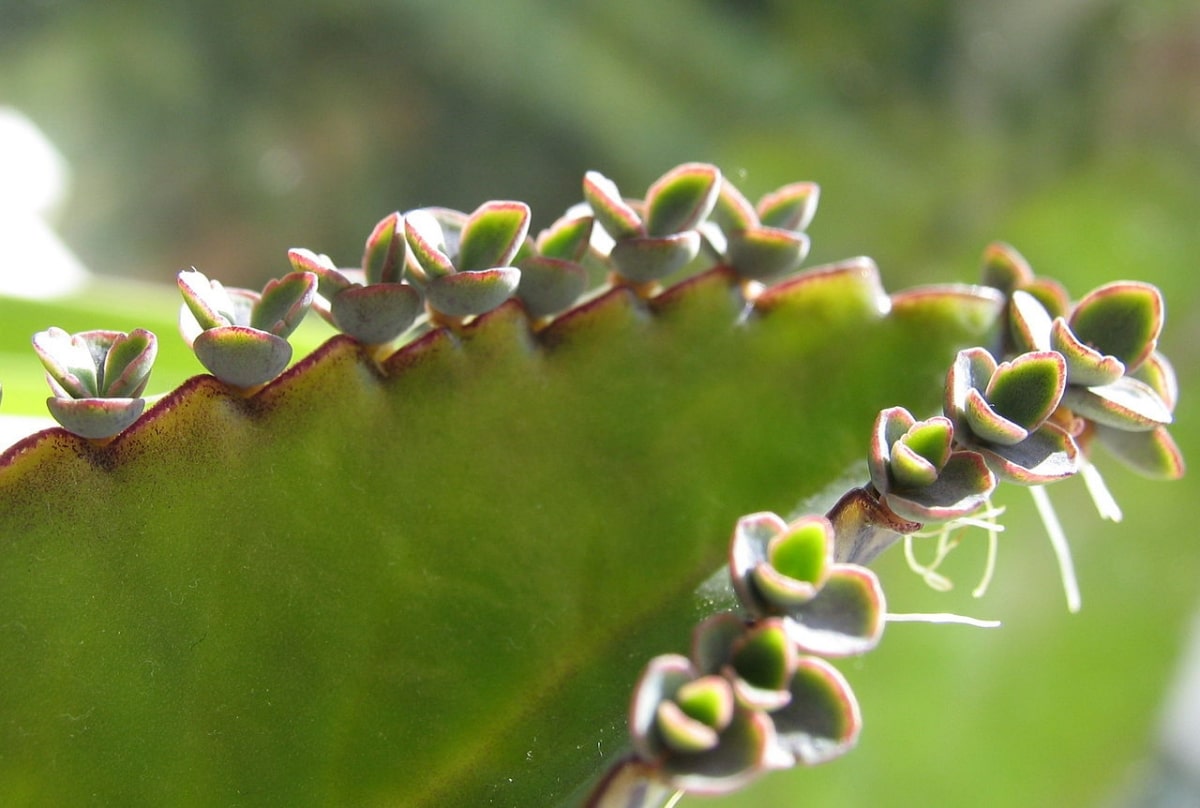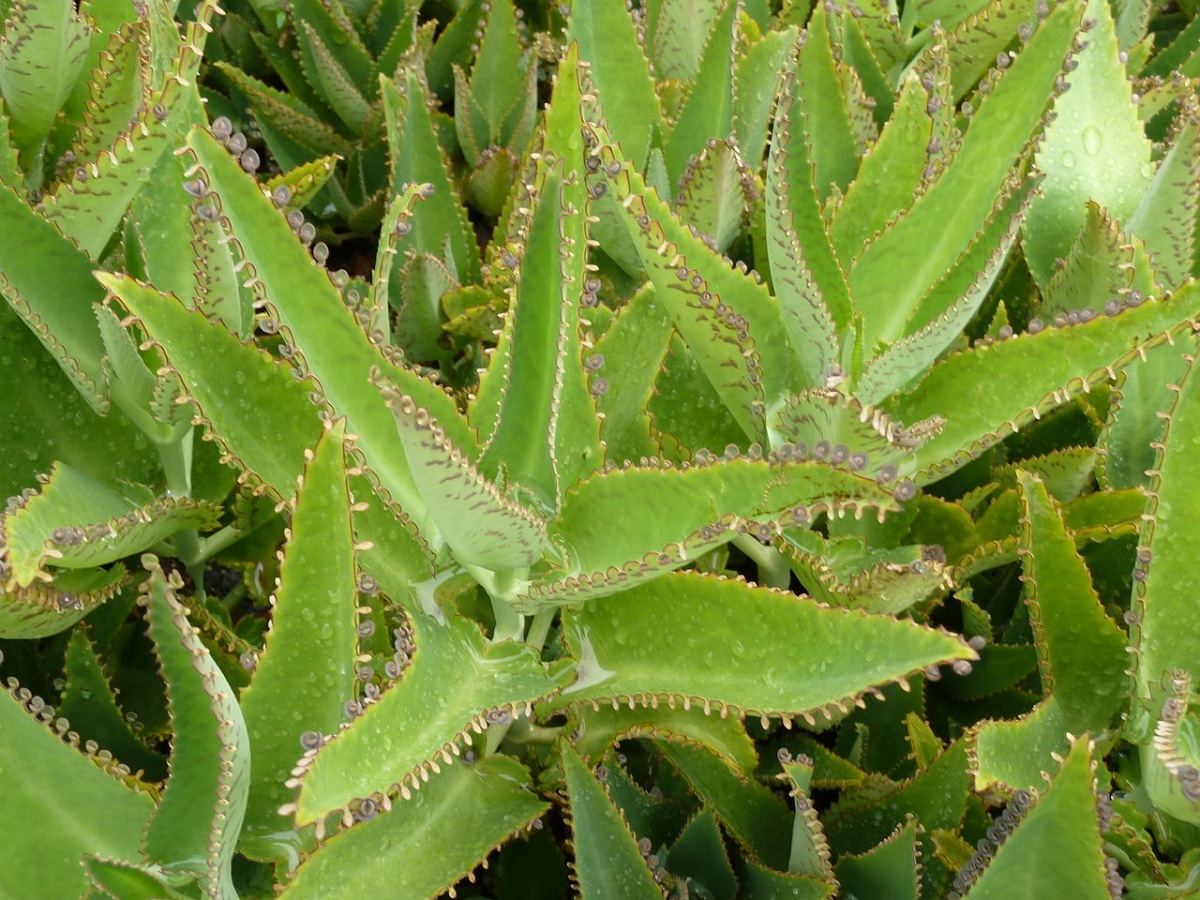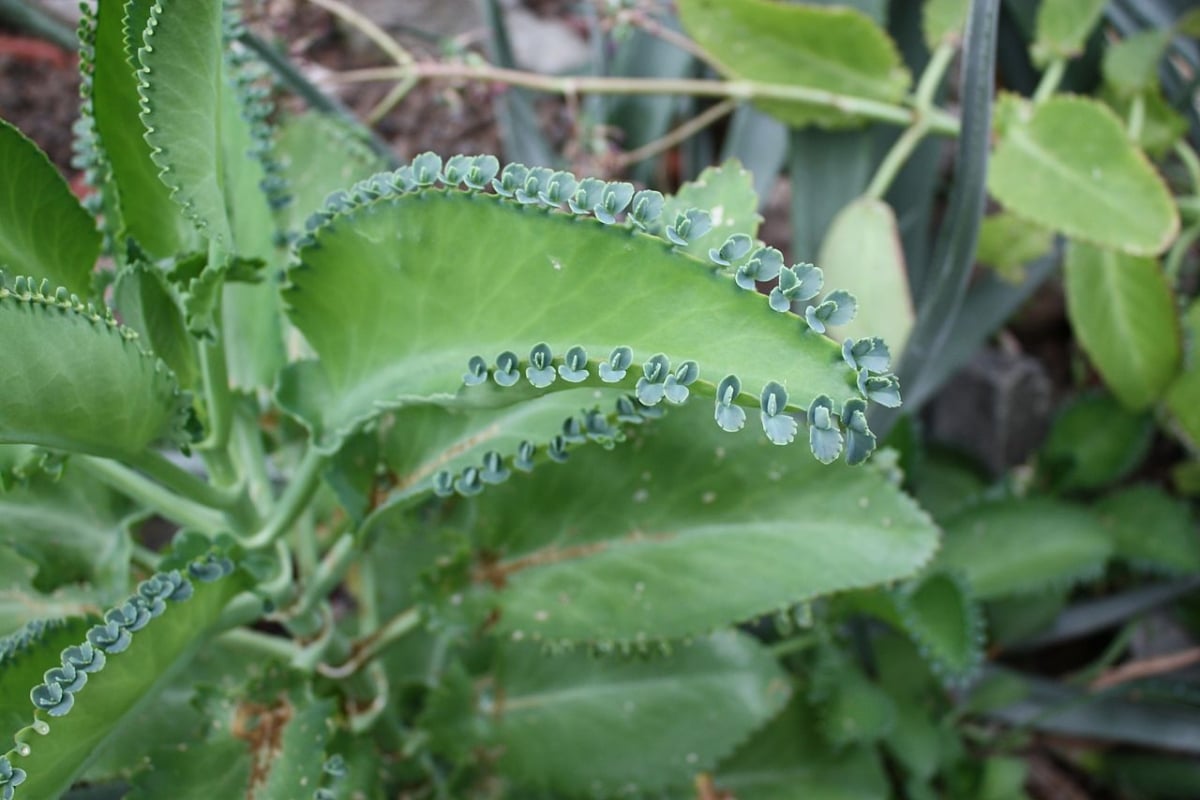
Image - Wikimedia / CrazyD
Kalanchoes are very, very interesting plants. Not only are they beautiful, but they are also characterized by their remarkable resistance to drought. In addition, although only about 20 or 30 different species of the 125 that have been described are cultivated, those are still many, so many that it will not be difficult for you to decorate with them. One of the most common is K. daigremontiana, also known as devil's backbone
But do you know how to take care of a Kalanchoe daigremontiana? Picking it out is easy, but keeping it alive is another story. So that you know how to achieve it, below we will explain how you can achieve it.
How to take care of a Kalanchoe daigremontiana?

Image - Wikimedia / JMK
It is a fast-growing succulent needs very little care, but as with the rest of species of kalachoe, you have to control the irrigation a lot so that it does not have problems. But believe me when I tell you that if the soil in which it is going to grow is chosen well, only with that, the roots can be largely prevented from suffering. Although, of course, it is not the only thing to do:
Is it indoor or outdoor?
El Kalanchoe daigremontiana, popularly called aranto or devil's backbone, is a succulents native to southwestern Madagascar. The climate there is tropical, so it is not genetically prepared to resist frost, although it can withstand up to -1ºC without suffering too much damage.
Thus, in cold climates (or with winters like that) it is kept indoors, but in the rest it is successfully grown outdoors. In the latter, a lot must be controlled, especially if you live in an arid or semi-arid region, since it can end up being an invasive plant.
Sun or shade?
It is important that it is placed in a sunny place, even indoors it should receive direct (natural) light, so don't hesitate to put it next to a window. Also, considering that it is a small plant, although it can measure up to 1 meter in height, it develops very thin stems barely 1 centimeter thick, so it can be grown in a pot throughout its life.
But beware: if you have never been in the sun before, you should get used to it little by little so that you do not burn. To do this, you have to expose it to the star king one hour each day, either early in the morning or at sunset. As the weeks go by, increase the exposure time by 1 hour every seven days.
What never, I repeat, you should never do is put it in a room where there is hardly any light. Under these conditions, their stems will bend as they grow in the direction of any light source, such as the reflection of the Sun on a piece of furniture. And not only that: but it would also end up losing color and weakening.
What land do you need?
El Kalanchoe daigremontiana grows without problems in light soils that have good drainage. If it is in a pot, you can choose to plant it in a substrate for cacti and succulents (which you can buy here), or in a universal culture containing perlite.
If you are going to have it in a pot, remember to transplant it into a larger one if you see roots coming out of the holes in it, and/or if it has already occupied all the space it had.
When and how to water it?

Image - Wikimedia / Anneli Salo
As we anticipated at the beginning, it is a plant that does not have to be watered much, not even in summer. Withstands drought very welleven during a heat wave. This does not mean that it should never be watered, but rather that if a week goes by without receiving a drop of water, surely nothing will happen to it, especially if it is grown indoors.
But for it to grow well and be healthy, we recommend watering it once a week during the summer, and once every two weeks or 20 days the rest of the yearAs long as it doesn't rain. We will pour the water that is necessary until it comes out through the drainage holes of the pot, or until it is well soaked if it is planted in the ground.
Does it have to be paid?
If grown in temperate or cold climates, yes, because you're going to need that extra help to get through winter (even if you're indoors). In these places, it is necessary to start paying in spring, and continue until the end of autumn. To do this, you can apply a liquid fertilizer for cacti and succulents, such as this, following the instructions on the package (normally you have to dilute a small amount in a liter of water before adding it to the kalanchoe).
But when it is kept in warm weather, such as in the coastal regions of the Iberian Peninsula, as well as in the Canary and Balearic archipelagos, it is not recommended because this fertilization will only help it grow and multiply faster.
How does it multiply?
Get new copies of your Kalanchoe daigremontiana It is so easy that you only have to provide the care that we have told you so far. And nothing more. the only it will not take long to produce numerous suckers that will sprout from the edge of the leaves. As soon as they have some roots, you can separate them from the mother plant and plant them in pots.
What to do so that the flower of the Kalanchoe daigremontiana outbreak?

Image - Wikimedia / Ianaré Sévi
It is not easy to see the flower of the Kalanchoe daigremontiana. And since it also produces many suckers, hardly anyone thinks of propagating it by seed. But if we want to do something to help it flourish, my advice is this: don't pamper him too much.
That is to say, You have to make sure that the land is not dry for a long time, protect it from the cold if you live in an area where frosts are recorded, and change the pot if it has been in the same pot for more than three years, but beyond that, don't pay too much attention to it, it's not necessary.
What are the properties of Kalanchoe daigremontiana?
There are several species of calanchoe that have been used as home remedies to treat different diseases. One of them is K. daigremontiana, which is traditionally used to heal wounds and treat the symptoms of respiratory, gastrointestinal and genitourinary diseases. But There is no scientific evidence to show that it is really effective against these pathologies, and even less so against cancer., as explained in this article on the web Naukas.
In addition, you should know that it contains a cardiac glycoside, daigremontianin, which in high doses is toxic, and can even cause death in small animals.
What did you think of the Kalanchoe daigremontiana? Do you dare to have one?